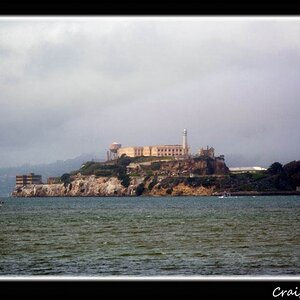adamfilip
TPF Noob!
- Joined
- Jul 14, 2018
- Messages
- 3
- Reaction score
- 2
- Can others edit my Photos
- Photos OK to edit
Hey Folks, I have been an avid photographer for over 20 years, I am a gear head and I love learning about photography. Many many years ago a friend suggested I use focus and recompose and it really made sense at the time. but even when using pro gear and lenses I noticed that I often dont get eyes in focus and for the life of me I couldnt figure out what I was doing wrong. But I finally figured it out and im baffled that i didnt realize it all along.
When doing portaits or candids using a Iens with a shallow depth of field I suggest you avoid using Focus and Recompose. When you focus using centre AF point and then recompose your shot, you tend to shift the focus plane behind the persons head and eyes are often out of focus, So instead compose and then select an AF point thats closest to the eyes.
This is more and more important the faster the lens is.(f 1.2, f1.4, f2.8) with a shallow depth of field and with long focal lengths. as the available depth of field available is very shallow. Stepping down to a smaller aperture can help, but it also eliminates the bohek/separation of subject to background.
Focus and Recompose is still a valid and useful technique but just not in every situation. with modern cameras with many available focus points there are better ways to achieve critical focus
This is not new information, but its good knowledge that every photographer should really grasp
hope this helps.
See this illustration.
See how recomposing shifts the focus plane!

When doing portaits or candids using a Iens with a shallow depth of field I suggest you avoid using Focus and Recompose. When you focus using centre AF point and then recompose your shot, you tend to shift the focus plane behind the persons head and eyes are often out of focus, So instead compose and then select an AF point thats closest to the eyes.
This is more and more important the faster the lens is.(f 1.2, f1.4, f2.8) with a shallow depth of field and with long focal lengths. as the available depth of field available is very shallow. Stepping down to a smaller aperture can help, but it also eliminates the bohek/separation of subject to background.
Focus and Recompose is still a valid and useful technique but just not in every situation. with modern cameras with many available focus points there are better ways to achieve critical focus
This is not new information, but its good knowledge that every photographer should really grasp
hope this helps.
See this illustration.
See how recomposing shifts the focus plane!
Last edited:


![[No title]](/data/xfmg/thumbnail/37/37136-40f690dc7da693c09d7c99c3782954b8.jpg?1619737884)
![[No title]](/data/xfmg/thumbnail/39/39189-22b7e8d8eadc9cc3d7b341bfb336079e.jpg?1619738906)
![[No title]](/data/xfmg/thumbnail/37/37135-37494dce30fd59534347332f715b7f8c.jpg?1619737884)
![[No title]](/data/xfmg/thumbnail/36/36398-33d875428a7eefdf5b31188ec0f555a5.jpg?1619737551)


![[No title]](/data/xfmg/thumbnail/37/37137-43b5701b1efb7322c2c9fa6a1e30ccfa.jpg?1619737884)

![[No title]](/data/xfmg/thumbnail/39/39191-629bf2c0bb5afb4619be296cd91b9517.jpg?1619738907)
![[No title]](/data/xfmg/thumbnail/40/40300-583eaa43665714005823e12314084a4d.jpg?1619739411)

